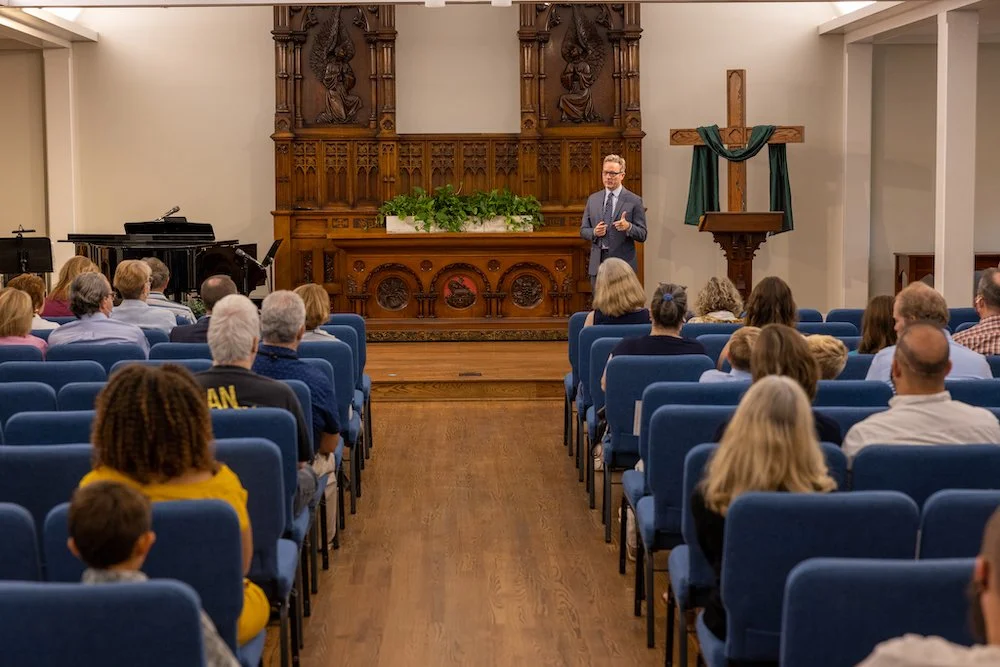Two years into the pandemic, church leaders reflect on the blessings — and drawbacks — of livestreaming. While some leaders worry about Christians forsaking physical gatherings, a majority of those surveyed said they see benefits to maintaining virtual options — especially for the immunocompromised, shut-ins and traveling members.
Read MoreMany pastors around the U.S. and the world are wondering how and when church life can transition back into real-life gatherings, with church members weaned off the safety and convenience of online church. ReligionUnplugged.com spoke to a dozen pastors from Africa to America to hear about the challenges of digital church post pandemic.
Read More(OPINION) The pandemic has left us with questions about the relationship between churches and Big Tech: Could traditional faiths hold rites in virtual reality spaces, along with augmented reality Sunday school classes? Could ancient Jewish prayers chanted by mourners be replaced with waves of comments and clicks?
Read MoreAmid a second wave of COVID-19 infections and low vaccine access in Uganda, the country has imposed a nationwide lockdown ending July 30 that has pushed nearly all activities online. Now, since July 1, the government has introduced a 12% tax on Internet data that was already expensive in the country, which is constraining church members’ ability to access online worship at a time when physical gatherings are banned.
Read MoreCDC guidelines and relaxed regulations have allowed many houses of worship in the U.S. to return to in-person worship. But these churches will maintain a virtual presence even after the pandemic is over, from a hybrid church to a developer creating virtual reality church buildings.
Read MoreNationwide, some congregations across the country are reopening for the first time during Holy Week 2021. But pastors say that reopening their congregation is much more than simply cleaning up and unlocking the doors of the church. Their congregations are emotionally rocked and feeling the effects of disconnection.
Read MoreIt’s clear, thanks to COVID-19, that the church is not a building. In a post-pandemic world, some ask: Why have a building at all?
The pandemic has upended and reinvented the form and shape of ministry as Churches of Christ have learned to be virtual, socially distant and masked. But perhaps no aspect of congregational life has been called to creativity more urgently than children’s ministry.
Read MoreThroughout the COVID-19 pandemic, Apostles Brooklyn church taught that New Yorkers can be joyful while isolated in quarantine when they focus on God. Still, the church acknowledges this is incredibly difficult without meeting people in person. So some members have innovated small groups to watch the Sunday services at apartments in pods of 10 or fewer people.
Read MoreA new study conducted by the Hartford Institute for Religion reveals several key trends within megachurches: primarily that they’re becoming more racially and ethnically diverse.
Read MoreSince the early New Testament church met in homes, many startup churches and church plants have met in eccentric, odd and unusual locations, calling themselves churches without walls. As younger Americans continue dropping out of the pews, ministries like Christ Chapel’s college outreach in Ft. Worth leave traditional spaces behind and come to their audience in bars, coffee shops and Zoom.
Read MoreProminent evangelicals Francis Chan, John MacArthur, Sam Rodriguez, Andy Stanley and religious freedom experts weighed in on how churches should navigate changing COVID-19 guidelines that some say unfairly target houses of worship.
Read MoreA new Pew Research survey says a majority of Americans believe churches should follow the same restrictions as other businesses in their local area.
Read MoreChurches in Kenya are slowly reopening during the coronavirus pandemic, though some church leaders think their religious freedom is coming under fire with restrictions, including a limit of one hour for a worship service and a ban on adults 58 and older and youth younger than 18.
Read MoreFrom the Bahamas to the Midwest, South and East Coast of the U.S, here’s how different houses of worship are handling the decision to reopen safely during the coronavirus pandemic or reach their communities online amid concerns of rising mental health problems during a lockdown and high unemployment.
Read MoreWhile urban churches in Uganda have moved online during the COVID-19 pandemic, churches in rural areas with less Internet access have become more creative, using “horn” speakers to broadcast preaching, prayers and music to their communities inside their homes and allowing community leaders to give health announcements and guidance.
Read MoreWhile urban churches in Uganda have moved online during the pandemic, rural churches with less Internet access have gotten more creative. Using “horn” speakers, they are broadcasting daily gospel music, prayers and preaching to their communities inside their homes, and allowing community leaders to address the neighborhoods with health announcements and guidance.
Read MoreThe “love feast” was regularly practiced by early American Methodists who were scattered across the frontier and had to wait for a quarterly visit from traveling ministers to have communion. In the absence of their minister, communities would gather to share stories of how God was working in their lives. During the COVID-19 pandemic, Methodists who had never or rarely held love feasts before are now hosting them online.
Read MoreWith a long-trending decline in the number of Americans who identify as Christian, stay-at-home orders are testing churches’ ability to maintain connections with followers or lose more of their flocks. During Holy Week, many churches report higher views online than can fit in their sanctuaries. Some are even hosting virtual activities like an Easter egg hunt to engage kids.
Read MoreA recent poll found that two-thirds of evangelical pastors say their tithe incomes have fallen in the past two weeks, since the spread of coronavirus hit the U.S. Churches are responding with salary cuts, temporary layoffs and reorganizing budgets while filling food pantries for those stuck at home without work.
Read More



















